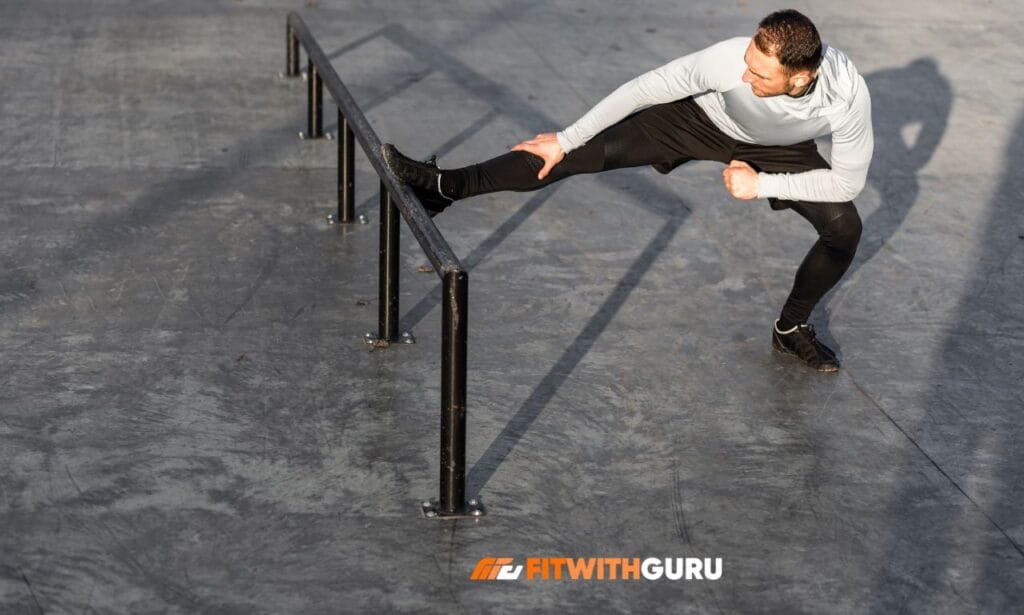If you want to increase your vertical jump, a vertical jump workout plan is not optional, it’s essential. Whether you’re aiming for slam dunks, explosive volleyball spikes, or just to improve athletic performance, a structured vertical jump workout plans can give you proven, measurable results.
Forget generic advice, this guide walks you through a step-by-step system used by athletes and performance coaches worldwide. Let’s jump right in (pun intended).
How the Vertical Jump Workout Plans Is Structured
An effective vertical jump workout plan targets four key areas:
- Explosive power
- Strength development
- Mobility and flexibility
- Jump-specific technique
This article breaks each of these down, offering drills, sets, and pro tips.
The Science Behind an Effective Vertical Jump Workout Plans
A solid vertical jump workout plan is based on understanding biomechanics and muscle recruitment. Your glutes, quads, hamstrings, calves, and core must all work together for maximum lift-off.
Research shows that combining plyometrics with strength training delivers superior vertical gains versus either method alone. And that’s exactly how this plan is designed.
Weekly Vertical Jump Workout Plans Schedule (Sample Table)
Here’s a high-performing weekly schedule to follow:
| Day | Focus Area | Type of Workout |
| Monday | Lower Body Strength | Squats, Deadlifts, Lunges |
| Tuesday | Jump Technique | Box Jumps, Depth Jumps |
| Wednesday | Rest & Mobility | Foam Rolling, Stretching |
| Thursday | Explosive Power | Power Cleans, Medicine Slams |
| Friday | Plyometrics | Bounding, Broad Jumps |
| Saturday | Core + Balance | Planks, Stability Exercises |
| Sunday | Active Recovery | Walking, Swimming |
Lower Body Strength Training for Your Vertical Jump Workout Plan
Explosive vertical jump is based upon the core element of lower body strength. In this section of the plan, the aim is to strength-train glutes, quads, hamstrings, and calves by performing such exercises as, squats, lunges, and deadlifts. Working on these muscles enhances your production of forces enabling you to jump high with safety and land properly.
Why Strength Matters for Vertical Jump Gains
Strength is the foundation of explosion. You can’t jump higher if your muscles aren’t strong enough to push your body weight off the ground.

Best Strength Exercises to Include
Here are core lifts you must include in your vertical jump workout plan:
- Back Squats (3–5 sets of 5 reps)
- Romanian Deadlifts (3 sets of 8 reps)
- Bulgarian Split Squats (3 sets of 6–8 reps per leg)
- Weighted Step-Ups (2–3 sets of 10 reps)
Progressive overload is the name of the game. Add weight weekly to stimulate muscle growth and strength gains.
Plyometrics: The Heart of the Vertical Jump Workout Plans
A higher vertical jump requires your muscle to provide the greatest amount of force during short intervals which is trained during plyometric exercises. Such exercises as box jumps, jump squats and bounding will enhance your explosive power, speed and coordination which in turn are important aspects of elevating your jump to the new level.
What Plyometrics Do for Vertical Jump Performance
Plyometrics train your muscles to contract faster and harder. They help develop neuromuscular efficiency, critical for vertical gains.

Top Plyo Drills for Jump Height
- Box Jumps (3–4 sets of 5 reps)
- Depth Jumps (3 sets of 3 reps)
- Tuck Jumps (3 sets of 10 reps)
- Lateral Bounds (2–3 sets of 20 seconds)
Keep rest between sets around 90–120 seconds to maximize power output.
Jump Technique Training Within Your Vertical Jump Workout Plan
Using the correct technique of jumping allows you to use your power to its maximum and also limits the risk of injury. The section of the plan works on the body positioning, the arm swing and take off mechanics so that you take advantage of your body strength and jump up higher and safer.
The Skill of Jumping: Form Over Force
Technique matters more than most think. Even the strongest athletes won’t see gains if their jump form is inefficient.
Drills to Improve Jump Technique
- Approach Jump Practice
- One-Step Jumps
- Vertical Reach Tests
Film yourself weekly to analyze and refine your jump mechanics.
Mobility and Flexibility in a Vertical Jump Workout Plan
Better mobility and flexibility increases range of motion, which makes jumping deeper and more powerful. This part will work on hip, ankle and hamstring flexibility to contribute to improved mechanics, less tightness and avoid injury throughout explosive training.
Unlocking Full Range of Motion for Power
Tight hips, hamstrings, or ankles limit your vertical jump. Mobility work should be intentional, not just an afterthought.
Dynamic Warm-Up Routine (Pre-Workout)
- Leg swings (front & side)
- World’s Greatest Stretch
- Hip openers
- Ankle bounces
Post-Workout Flexibility Routine
- Hamstring stretches
- Hip flexor stretches
- Glute foam rolling
- Calf massage
Mobility isn’t flashy—but it’s your long-term vertical jump insurance.
Core and Stability: The Hidden Gems of a Vertical Jump Workout Plan
A strong core stabilizes your body during every jump phase. Weak core = power leak.
Best Core Movements for Jumpers
- Plank Variations (Front/Side/Reach-Outs)
- Hanging Leg Raises
- Bird Dogs
- Cable Pallof Press
Integrate core work 2–3 times per week for best results.
Nutrition Tips to Maximize Your Vertical Jump Workout Plan
You can’t out-train a bad diet.
Key Nutritional Focus Points
- Protein: 1.6–2.2g per kilogram of body weight for muscle growth and repair
- Carbs: Fuel workouts, especially plyos and strength sessions
- Hydration: Electrolytes = jump fuel
- Supplements: Creatine, beta-alanine, and whey protein can help
Treat food like performance fuel—not just calories.
Tracking Your Results in the Vertical Jump Workout Plan
The metrics will help to be motivated and to make corrections. Proper testing by testing your vertical, strength and performance levels regularly, enables you to find out what actually works and allows you to further perfect your training to improve continuously.
Tools to Measure Progress
Use these tools every 2–4 weeks:
- Vertec Device
- Contact Mat
- Phone Apps (e.g. My Jump 2)
- Chalk Mark on Wall Test
Monitoring keeps you motivated and guarantees that you’re headed in the right direction.
Common Mistakes in a Vertical Jump Workout Plan (And How to Avoid Them)
Avoid these traps:
- Skipping warm-ups
- Neglecting form to lift heavier
- Too much volume without rest
- Zero mobility or recovery work
- Inconsistent tracking
Fix these, and your vertical jump workout plans becomes twice as effective.
5 Vertical Jump Workout Plan FAQs
1. How long does it take to see results from a vertical jump workout plan?
You’ll typically see noticeable improvements in 4–6 weeks, with dramatic gains in 8–12 weeks if you’re consistent.
2. Can beginners follow this vertical jump workout plan?
Yes, but start with bodyweight versions and master form before adding weights or advanced plyos.
3. Should I train vertical jump daily?
No. Your central nervous system needs recovery. 3–4 days/week of focused training is ideal.
4. What’s the #1 exercise in a vertical jump workout plan?
Depth Jumps are arguably the most powerful, combining reactivity and explosiveness.
5. Do I need gym access to follow a vertical jump workout plan?
While gym access helps, you can achieve excellent results with bodyweight, resistance bands, and minimal equipment.
Conclusion: Ready to Commit to a Vertical Jump Workout Plan That Actually Works?
A real vertical jump workout plan is more than a few box jumps and squats. It’s a calculated, science-based system that evolves as you do. From strength to technique, mobility to mindset—every part matters.
Use the strategies here consistently, and you won’t just see results—you’ll feel the difference in every jump. Jump higher. Train smarter. Now you have a vertical jump workout plans that actually works—go dominate the air.

